2019 Toyota Tundra Repair, Service & Tires
Get Started
Complete Auto Care for Your 2019 Toyota Tundra
-
TIRES FOR YOUR 2019 Toyota Tundra View Tire Info GET TIRE PRICING
-
REPAIR FOR YOUR 2019 Toyota Tundra View Repair Info SCHEDULE REPAIR
-
MAINTENANCE FOR YOUR 2019 Toyota Tundra View Maintenance Info SCHEDULE MAINTENANCE
-
OFFERS FOR YOUR 2019 Toyota Tundra Limited Time Tire Offers VIEW ALL COUPONS
2019 Toyota Tundra Tires
Recommended Tires | Tire Information
2019 Toyota Tundra Tires Sizes, Speed Ratings, and Inflation
Not sure about your 2019 Toyota Tundra tire size? Use the following chart to find information on tire size, speed rating, and inflation.
| Trim Level | Speed Rating | Inflation in PSI F/R | Tire Size |
|---|---|---|---|
| 2019 Toyota Tundra 1794 Edition* | T | 30 PSI/33 PSI | P275/65R18 |
| 2019 Toyota Tundra 1794 Edition* | H | 30 PSI/33 PSI | P275/55R20 |
| 2019 Toyota Tundra TRD Pro | T | 30 PSI/33 PSI | P275/65R18 |
| 2019 Toyota Tundra SR | T | 30 PSI/33 PSI | P255/70R18 |
| 2019 Toyota Tundra Platinum | H | 30 PSI/33 PSI | P275/55R20 |
| 2019 Toyota Tundra Limited* | H | 30 PSI/33 PSI | P275/55R20 |
| 2019 Toyota Tundra Limited* | T | 30 PSI/33 PSI | P275/65R18 |
| 2019 Toyota Tundra SR5* | H | 30 PSI/33 PSI | P275/55R20 |
| 2019 Toyota Tundra SR5* | T | 30 PSI/33 PSI | P255/70R18 |
| 2019 Toyota Tundra SR5* | T | 30 PSI/33 PSI | P275/65R18 |
|
2019 Toyota Tundra 1794 Edition* Speed Rating: T Inflation F/R: 30 PSI/33 PSI |
|
2019 Toyota Tundra 1794 Edition* Speed Rating: H Inflation F/R: 30 PSI/33 PSI |
|
2019 Toyota Tundra TRD Pro Speed Rating: T Inflation F/R: 30 PSI/33 PSI |
|
2019 Toyota Tundra SR Speed Rating: T Inflation F/R: 30 PSI/33 PSI |
|
2019 Toyota Tundra Platinum Speed Rating: H Inflation F/R: 30 PSI/33 PSI |
|
2019 Toyota Tundra Limited* Speed Rating: H Inflation F/R: 30 PSI/33 PSI |
|
2019 Toyota Tundra Limited* Speed Rating: T Inflation F/R: 30 PSI/33 PSI |
|
2019 Toyota Tundra SR5* Speed Rating: H Inflation F/R: 30 PSI/33 PSI |
|
2019 Toyota Tundra SR5* Speed Rating: T Inflation F/R: 30 PSI/33 PSI |
|
2019 Toyota Tundra SR5* Speed Rating: T Inflation F/R: 30 PSI/33 PSI |
* Note: these models have different tire sizes depending on vehicle options.
Recommended Tires for Your 2019 Toyota Tundra
What tires are best for a 2019 Toyota Tundra? Check out the following tire brands and types.
 ALENZA AS ULTRA
ALENZA AS ULTRA
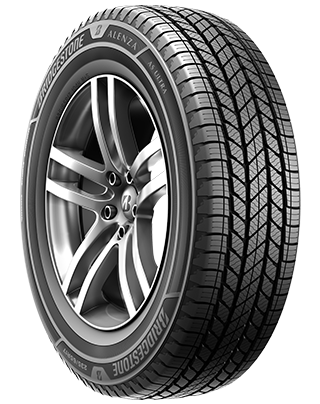
- No warranty
- All-Season
- Light Truck Tires
 Blizzak DM-V2
Blizzak DM-V2
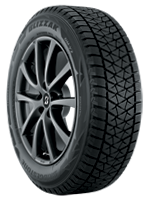
- No warranty
- Winter
- Winter
 DriveGuard Plus
DriveGuard Plus
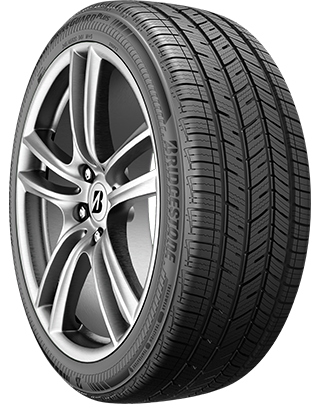
- Platinum Pact Limited Warranty
- All-Season
- Performance
 Dueler H/L Alenza
Dueler H/L Alenza
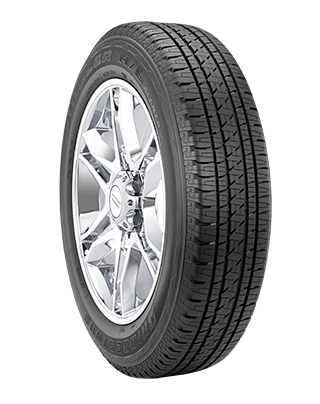
- Platinum Pact Limited Warranty
- All-Season
- Light Truck Tires
 Dueler H/L Alenza Plus
Dueler H/L Alenza Plus
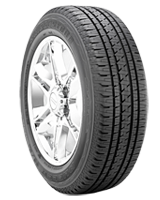
- Platinum Pact Limited Warranty
- All-Season
- Light Truck Tires
 Dueler A/T Revo 3
Dueler A/T Revo 3
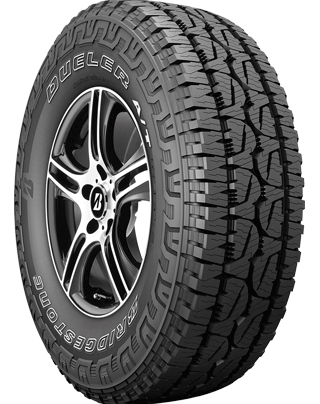
- Platinum Pact Limited Warranty
- All-Season
- Light Truck Tires
 Dueler H/T 684 II
Dueler H/T 684 II
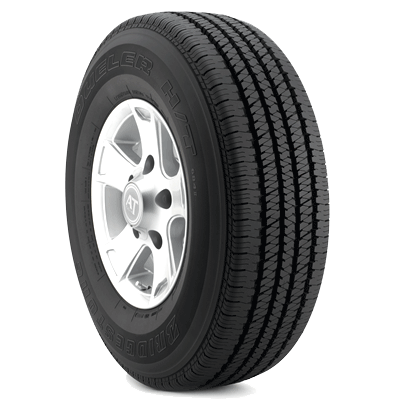
- Platinum Pact Limited Warranty
- All-Season
- Light Truck Tires
 Dueler H/T 685
Dueler H/T 685
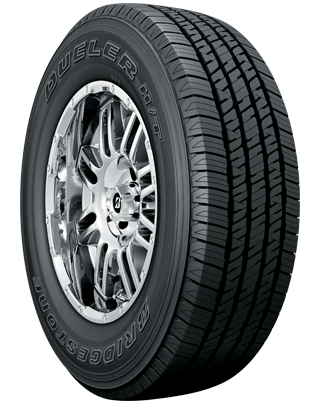
- No warranty
- All-Season
- Light Truck Tires
 Dueler A/T RH-S
Dueler A/T RH-S
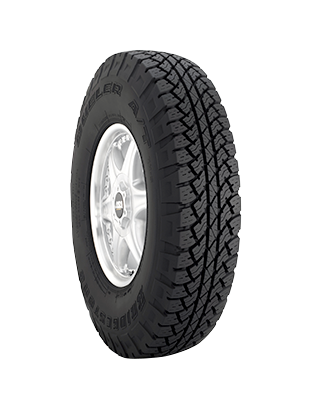
- Platinum Pact Limited Warranty
- All-Season
- Light Truck Tires
 Destination LE3
Destination LE3
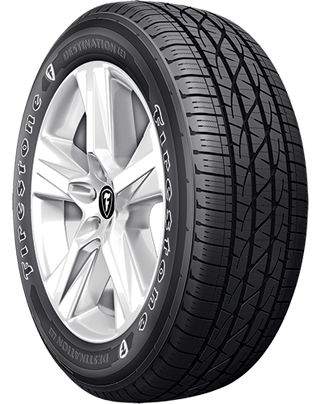
- No warranty
- All-Season
- Light Truck Tires
 Destination A/T2
Destination A/T2
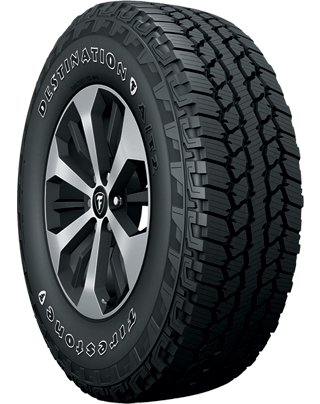
- Gold Pledge Limited Warranty
- All-Season
- Light Truck Tires
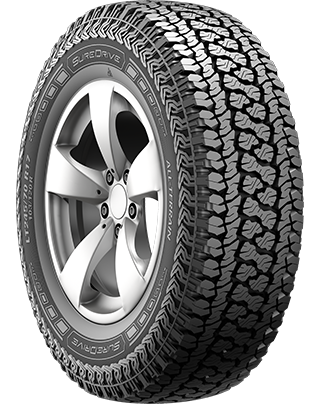
- No warranty
- All-Season
- Light Truck Tires
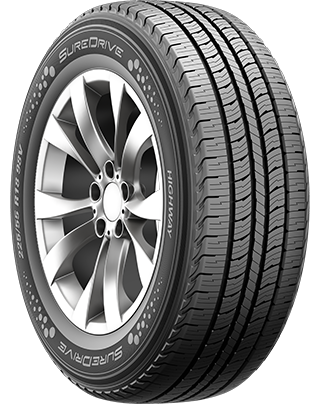
- No warranty
- All-Season
- Light Truck Tires
 PROXES ST III
PROXES ST III
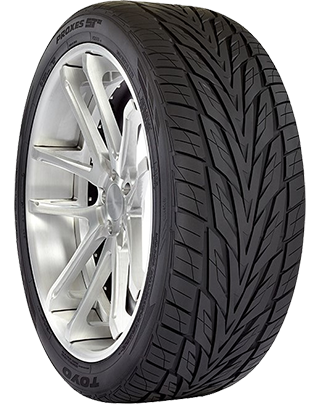
- No warranty
- All-Season
- Light Truck Tires
 OPEN COUNTRY R/T
OPEN COUNTRY R/T
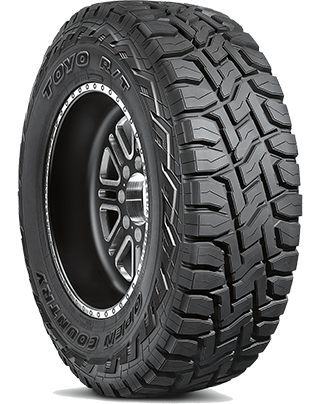
- No warranty
- All-Season
- Light Truck Tires
About 2019 Toyota Tundra Tires
Other than getting the proper tire size, you also want to think about a couple of other things when getting new Toyota Tundra tires like how and where you drive, and how much you want to spend. When evaluating your driving conditions, think about where you live (countryside vs. city vs. mountains) and the kind of unexpected weather you're likely to experience. Many drivers who live in states that experience all four seasons choose to purchase two sets of tires: one for summer and one for winter. Other drivers prefer to purchase one all-season set to limit trips to the tire shop and make sure their vehicle is prepared in the rain, sleet, snow, or sun!
Driving style is next on the list to think about when buying tires. If you're an avid off-roader who yearns to pioneer new paths, you have very different tire needs than a highway commuter who doesn't hit the hills very often. Talk to a tire technician at Firestone Complete Auto Care for help choosing the best tire for you, or start shopping for Toyota Tundra tires online.
Toyota Tundra Installation and More
We sell tires, but we also service them and care for all the around-the-wheel components. We're your one-stop shop for tire installation, rotation, and ongoing maintenance! Buy 2019 Toyota Tundra tires online and schedule your installation when it's convenient for you.
2019 Toyota Tundra Tire Q&A
-
Why check Toyota tire inflation? Even a tiny decrease in tire pressure could impact your safety and fuel economy. Maintaining proper tire pressure can help increase fuel economy, improve braking time, and boost tire lifespan.
-
What do the numbers on my Toyota Tundra tires mean? Your tire sidewall numbers tell you the recommended load carrying capacity, speed rating, treadwear, traction, and tire size. Talk to a tire technician to learn how to read Toyota tire numbers.
-
Can I check the tread depth on my Toyota tires at home? Stay on top of your tire tread depth to help avoid a dangerous drive. You can check tread depth with a penny. Hold the penny so that Abraham Lincoln is facing you, then place your penny into a tread groove upside down. If you can see the top of Abe’s head, your tread is shallow and it might be time for new Toyota Tundra tires. Grab a penny. Hold the so that Abe Lincon's head is facing you and his hair is pointing toward the ground. Then, place the penny into a tread groove. If you can see the top of Abe’s head, your tread is shallow and it might be time for new Toyota Tundra tires.
Types of 2019 Toyota Tundra Repairs
How do I learn more about auto repairs? Click on a service below to read about the types of Toyota Tundra repairs we do at Firestone Complete Auto Care.
Get Repairs for Your 2019 Toyota Tundra
No driver looks forward to car repairs. We’re here to change that, though. At Firestone Complete Auto Care, we want to make car repair painless and hassle-free. When it’s time for 2019 Toyota Tundra repair services, head to your nearest Firestone location and rest easy knowing that your Tundra is in capable hands. We'll work to evaluate the scope of repairs needed and explain your options. We value your trust, so we recommend only the repairs we think are necessary for your safety on the road.
What Will Toyota Tundra Repairs Cost?
Several factors can affect the cost to repair your 2019 Toyota Tundra, including the type of repair, prices of appropriate replacement parts, the labor involved, and the state you live in. We update them regularly to keep our deals fresh!
A few different aspects can influence repair costs for your 2019 Toyota Tundra, like
2019 Toyota Tundra Auto Repair Questions
-
Can scheduled maintenance help me avoid repairs? One of the best ways to prevent 2019 Toyota Tundra repairs is by staying on top of your Toyota maintenance schedule. This schedule is written by the people who made your vehicle and they know best how to keep it running smoothly.
-
What does it mean to be 'in tune' with your car? No, we’re not talking about finding the best jams on the radio! You know your car best, and you’re the first person who will notice if something doesn’t feel right (like new smells, sights, or sounds coming from your car). If you sense that something is 'off,' stop in for a Courtesy Check to have these symptoms checked out ASAP. Early action could help you prevent Toyota Tundra repairs.
-
Why do you recommend certain repairs for my Toyota? We won’t recommend a service or repair for your 2019 Toyota Tundra unless we think it’s necessary to keep you safe. Want to know more about a specific recommended repair? Ask! We’re here to help.
Get Your 2019 Toyota Tundra Brakes Fixed
Your Toyota Tundra engine may be strong and reliable. But if you can't stop it, then it's scrap metal. Don't wait if you're experiencing brake squeaks or a loss of braking power. Safe driving is difficult when your brakes are anything but their best. Plus, ignoring your brake problems can result in more damage and higher brake repair bills. Go to your local Firestone Complete Auto Care for 2019 Toyota Tundra brake repairs. We offer many affordable brake repairs like brake pad/shoe replacement, brake rotor/drum machining, brake fluid exchange, and brake caliper and wheel cylinder installation.
Toyota Tundra Brakes Questions
-
Why does my Tundra shake when I brake? Your Tundra could shake when you brake due to worn brake pads or rotors, warped rotors, loose or worn suspension components, or faulty brake calipers. You can always schedule a free brake inspection at the first sign of strange brake behavior.
-
How often do I need to replace my Tundra brake pads? Brake pads generally last between 30,000 and 40,000 miles. Your driving can affect how long your Tundra brake pads last, though. For example, mainly driving on highways and gradually braking can help increase the lifespan of your brake pads, and carrying hefty loads or riding your brakes can shorten it.
-
Does brake fluid leak when the car is off? Your Tundra brake system is a closed hydraulic system, which means that the brake fluid should not leak out of the system under normal circumstances. However, over time, the various components of the brake system can wear out or become damaged, which can cause brake fluid to leak out of the system.
Repairing Your Toyota Tundra Drivetrain
You don't want to go to just anyone for drivetrain repair. Drivetrains for front, rear, and all-wheel-drive and 4WD vehicles are all different. You want to come see the technicians at Firestone Complete Auto Care. We can take care of most 2019 Toyota Tundra drivetrain components Your Toyota Tundra may need driveshaft attention if you feel heavy vibrations in your floorboards, clunks when shifting, resistance when turning, or vibration as your vehicle accelerates.
2019 Toyota Tundra Drivetrain Questions
-
What are the symptoms of a damaged Toyota drivetrain system? Your Toyota Tundra drivetrain might be damaged if you notice strange noises from the rear of your vehicle, see fluid leaking, or have issues turning.
-
What triggers the malfunction indicator light (MIL) in a Tundra? A multitude of problems can activate your Tundra’s malfunction indicator light (better known as the check engine light), including issues with the engine, transmission, sensors, electrical system, or connectors.
-
How serious is a drivetrain malfunction in my Tundra? Don't ignore a drivetrain malfunction in your Tundra. As soon as you notice a problem, have it checked by a professional mechanic to diagnose the issue and carry out any necessary repairs. Driving with a faulty drivetrain is risky and may further damage your Tundra.
2019 Toyota Tundra Alignment Services
An alignment involves making adjustments to your Toyota Tundra's suspension system, which serves to attach your wheels to your vehicle. During the service, calculated changes are made to the angles of your tires. This is so that your tires hit the road at an optimal angle for your vehicle’s performance — just as Toyota intended. Before we adjust the alignment of your 2019 Toyota Tundra, we’ll start by checking the current alignment angles. If needed, we'll adjust your wheel alignment angles to match Toyota recommendations.
Answers to Toyota Tundra Alignment Questions
-
What can knock my Toyota Tundra out of alignment? Hitting a pothole or curb can alter your wheel alignment. So can general wear and tear over time.
-
How often does your Tundra need a wheel alignment? Generally, it’s wise to have your alignment looked at around every 6,000 miles or 6 months, whichever happens first. You should check your Tundra owner’s manual to verify Toyota’s suggested interval.
-
Do you need to get your Tundra wheels aligned when you get new tires? While you don’t necessarily need to get an alignment when putting new tires on your Tundra, it’s still a good idea. Ensuring your wheels are properly aligned can help support optimal handling, tire wear, and fuel efficiency.
2019 Toyota Tundra Engine Repair
If your 2019 Toyota Tundra needs engine repair, our expert techs will let you know what needs to be done and why before they get started. We never do any work without your sign-off. If a service can wait, we’ll make sure you know. If it's necessary for your safety, we'll make sure you understand that, too. We want to provide you with the information you need to make an informed engine repair decision. By choosing Firestone Complete Auto Care for Tundra engine repairs and you can feel confident knowing that we use Toyota-approved parts and components like the timing belt, oil gasket, sensors, or other parts.
Questions About 2019 Toyota Tundra Engines
-
Why does the check engine light in my Tundra turn on when I start my car? It’s usually normal for your check engine light to turn on upon ignition. This is just your Tundra testing its circuits. The dash light shouldn't stay on. If it does, you might want to bring your vehicle in for service.
-
Are Toyota Tundra engine noises bad? Strange under-the-hood noises can point to problems within your Toyota Tundra engine. Tapping or knocking could mean you need an oil change. Whistling sounds could mean you have an intake leak or misaligned belt. Squealing may be caused by a loose fan belt, and grinding could be a sign that something is wrong with your brakes — not the engine.
-
What could damage a Toyota engine? Certain driving habits can damage your engine and should be avoided. These habits include 'running on fumes,' revving the engine while still in Park, or pushing 'the pedal to the metal' before the engine has warmed up. Help sustain your engine’s performance and efficiency by staying miles away from these bad driving practices.
Tire Repair for Your 2019 Toyota Tundra
Firestone Complete Auto Care is here for you when your 2019 Toyota Tundra needs flat tire repair or inspection. Our tire technicians can determine whether it's safe to plug and patch the tire, or whether it needs to be replaced. We'll start by evaluating the state of wear, the location of damage, type of damage, and the size of the damage.
If we determine that your 2019 Toyota Tundra tire can be safely repaired, the repair process is actually fairly simple: (1) Separate the tire from the vehicle wheel, (2) use a filler to close up the puncture (this is to keep moisture from getting in), and (3) re-seal the inside lining of your tire so that air won’t escape.
Toyota Tundra Tire Repair Questions
-
How soon should I have my flat tire repaired? Driving on a flat or underinflated tire can put extra stress on your wheels and alignment. While it’s sometimes necessary to drive a short distance on a flat tire to get to a safe place, don’t take any other trips in your Tundra until you can have the flat tire repaired or replaced.
-
Can I use an emergency/temporary sealant to fix my Toyota's flat tire? A temporary sealant may be able to help you get to a repair location safely. But temporary or emergency sealants could possibly damage TPMS sensors, and in some cases may even void the warranty on your Bridgestone or Firestone tires. If your tire needs extensive repair, sealant can add time and labor costs to the process.
-
Why do the tires on my Tundra keep losing air? Your Tundra tires might keep losing air due to a leaking valve stem, puncture or hole in the tire tread or sidewall, or damaged wheel.
Maintenance for Your 2019 Toyota Tundra
Take care of your Toyota Tundra and it'll take care of you. With the right maintenance at the right time, your Tundra has a good chance of hitting 200,000 miles or more.
2019 Toyota Tundra Maintenance Schedule
What is the manufacturer recommended maintenance schedule for a 2019 Toyota Tundra? Find maintenance info for your vehicle.
About 2019 Toyota Tundra Scheduled Maintenance
Instead of waiting for an issue to arise with your Tundra, you can stay ahead of problems before they even begin. Just follow your 2019 Toyota Tundra maintenance schedule! This recommended maintenance schedule is written by the auto manufacturer, Toyota themselves. Driving conditions, climate variations, and other variables can affect which scheduled maintenance services you’ll need; in most cases, though, recommended maintenance will consist of services like tire rotations, vital fluid checks/exchanges, filter changes, brake pad replacement, and oil changes. Staying on track with routine service appointments can help your Tundra perform better, keep you safer on the road, and maybe even save you the headache of dealing with common 2019 Toyota Tundra problems in the future.
Learn About Vital Maintenance Needs for Your Toyota Tundra
Come to Firestone Complete Auto Care for manufacturer-recommended routine maintenance on your 2019 Toyota Tundra and a skilled technician will start the appointment with a Courtesy Check. A Courtesy Check helps "set the stage" for your service and catch any small problems before they turn into big repairs. Every Courtesy Check will include a visual inspection of your Tundra. We’ll check your head and tail lights, fluid levels, filters, tires (and their alignment!), and windshield wiper blades. We’ll also perform a free battery check to determine your battery’s charge level.
Firestone Complete Auto Care is your spot for 2019 Toyota Tundra maintenance. So visit us regularly, or visit us urgently. Many locations are open on weekends and in the evening.
2019 Toyota Tundra Maintenance Questions
-
What should I do after hitting a pothole in my Toyota Tundra? You know your Toyota Tundra better than anyone else, so you’ll know if something doesn’t feel right while driving. Have your alignment checked (and adjusted if necessary) as soon as you notice a pulling steering wheel to prevent suspension damage or uneven tire wear.
-
When does my Toyota Tundra need high mileage oil? Do you have more than 75,000 miles on your Toyota Tundra? If so, request to switch to high mileage oil at your next oil change. This type of oil is specially formulated to keep aging engine parts in the best possible condition.
-
Why are my Toyota dashboard lights on? It's better to get them addressed as soon as possible. An illuminated dashboard light means something in your vehicle isn't functioning like it should. Letting problems linger can mean bad news for your Toyota Tundra, so be sure to take your car in for service as soon as you notice an illuminated dashboard light.
2019 Toyota Tundra Battery Replacement & Size
Not sure what battery to get for your Toyota Tundra?
| Battery | Engine | Warranty | Cold Cranking Amps | |
|---|---|---|---|---|
| 27F-3 | V8/5.7L | Replacement 24 months | Performance months | 710 |
| 24F-6 | V8/5.7L | Replacement 36 months | Performance months | 750 |
| 24F-RP | V8/5.7L | Replacement 48 months | Performance months | 750 |
| 24F-3 | V8/4.6L | Replacement 24 months | Performance months | 650 |
| 24F-6 | V8/4.6L | Replacement 36 months | Performance months | 750 |
| 24F-RP | V8/4.6L | Replacement 48 months | Performance months | 750 |
2019 Toyota Tundra Batteries
Generally, car batteries last from three to five years. You want to replace your 2019 Toyota Tundra battery before it fails and leaves you stranded. Watch for signs that your current battery is getting too old or too weak. A slow engine crank, an illuminated battery or check engine light, swollen battery case, corrosion-covered posts, or faded headlights may all indicate that your battery is waving goodbye.
Or, you can get a complimentary battery check at your nearest Firestone Complete Auto Care. Drop in for a free battery check and, if needed, a replacement battery for your 2019 Toyota Tundra. Car batteries are one of our many specialties! Our technicians are well-acquainted with Toyota’s service specs for Tundra battery cold cranking amps and reserve capacity. Get help figuring out the battery size that matches your vehicle, and schedule a weekday or weekend battery replacement service for your car.
Top Toyota TundraCar Battery Questions
-
Why doesn’t my Toyota Tundra battery stay charged? A car battery that needs to be jump-started every time is as good as dead. It may be getting old. Or, you’ve been leaving the doors slightly open and the dome lights on during the night. Stop in for a free battery check at your nearest Firestone Complete Auto Care and learn more about your battery's charge.
-
How long do car batteries last? The typical 12-volt car battery may last three to five years, depending on the type of battery, the driving conditions, and how well the battery is maintained.
-
Why is there white, flaky stuff around my Tundra’s battery post? The white, crusty stuff that can accumulate around Tundra car battery terminals is called corrosion. It is caused by a chemical reaction between the battery acid and the air, which creates a white, powdery substance that can build up on the terminals over time. Corrosion can interfere with the flow of electricity between the battery post and the car's electrical system, sometimes leading to poor electrical performance, difficulty starting, and even premature battery failure.
2019 Toyota Tundra Oil Changes
Toyota recommends having your 2019 Toyota Tundra’s motor oil changed at regular intervals. No matter the mileage, your Tundra may need its oil changed ASAP if your check engine light is on, you hear knock knock knock coming from the engine, smell oil inside the car, or see an excess amount of vehicle exhaust. You might need an oil change more frequently than what’s recommended by Toyota if you regularly haul heavy loads, frequent dusty roads, adventure off-road, or go at low speeds on long distance trips.
Whether you need high mileage oil, synthetic oil, or conventional oil, you'll find the right 2019 Toyota Tundra motor oil at Firestone Complete Auto Care. Talk with a teammate and consult your owner's manual before picking a motor oil. At Firestone Complete Auto Care, you can choose from the following oils: Quaker State® Advanced Durability™ conventional oil, Pennzoil® High Mileage Vehicle® motor oil, Pennzoil Platinum® Full Synthetic motor oil with PurePlus™ Technology, and Shell Rotella® heavy-duty engine oil. In an oil change service, an auto technician will change your Tundra’s oil, replace and recycle the old oil and filter, inspect the rest of your car’s filters, refill vital car fluids, and visually inspect the rest of the vehicle. Let the experts take care of your Tundra’s engine by making an oil change appointment today.
2019 Toyota Tundra Oil Change Questions
-
Why is the oil light on in my Toyota Tundra? If you’re overdue for an oil change, it might trigger your Toyota Tundra oil change reminder light. If the oil pressure light is illuminated, it could be due to low engine oil, a failing oil pump, a malfunctioning oil pressure sensor, or a clogged oil filter.
-
Can I change my Toyota Tundra oil at home? Changing engine oil at home isn’t as simple as it’s made out to be. You’ll have to figure out how to properly dispose of the oil and buy special tools. Having your oil changed professionally can not only reduce the risk of something going wrong during the service, but it’ll also help your car perform smoothly down the road.
-
Why is my Toyota exhaust smoke gray or blue? Your engine could be burning oil due to a leak. It may be time for a pro to take a look. A leak can be caused by a variety of issues including faulty valve seals, blown piston rings, or damaged cylinder walls.
Engine Tune-Up Service for Your 2019 Toyota Tundra
Routine engine tune-ups can bring power back to your Tundra. Your local Firestone Complete Auto Care offers a range of engine tune-up services for your 2019 Toyota Tundra. The standard Firestone Tune-Up is one service option. It includes a complete visual inspection of engine components, installation of new spark plugs, and a lifetime warranty on parts*. Another service option pays special attention to the filters in your Tundra. Specifically, we replace the fuel filter and air filter. The third tune-up option is a fuel system cleaning service, which is a three-step process that removes varnish, dirt, and carbon deposits on your Tundra's fuel injectors, throttle body, and throttle plate. The result? Restored fuel system performance. Keep in mind that your Tundra's mileage and maintenance history can uniquely impact its tune-up needs. Talk to a technician about your driving style, mileage, and service history to learn more about your vehicle's specific needs.
*Ask a Firestone Complete Auto Care teammate about full terms and conditions for warranties.
2019 Toyota Tundra Engine Tune-Up Q&A
-
What happens if my Toyota Tundra spark plugs fail? When it’s time to replace the spark plugs, don’t delay. These small (but vital!) parts provide the electric spark that your car needs in order to start, and old spark plugs can prevent your car from starting at all. Replace spark plugs on time or about every 30,000 miles or so.
-
What does a puddle underneath my Toyota Tundra mean? Puddles could indicate an oil leak, coolant leak, or brake fluid leak– all of which can critically hurt your engine. Have your engine inspected as soon as you spot a pool of liquid in your usual parking spot.
-
How frequently do the fuel injectors in my Toyota Tundra need to be cleaned? The frequency at which car fuel injectors should be cleaned can vary depending on several factors, including the type of fuel used and the driving conditions. Some manufacturers generally recommend a fuel system cleaning as part of your general car maintenance, or as needed based on symptoms of poor fuel system performance.
2019 Tundra Toyota Steering & Suspension Services
During the first few years you had your 2019 Toyota Tundra, the ride was probably so smooth that you didn’t even think about it! Now, however, things are starting to feel a little rough. Maybe your Tundra jolts, leans to one side, or makes an unusual noise when going over a speed bump. As soon as you notice that something’s “off” with your 2019 Toyota Tundra, bring it in for steering and suspension repairs. We'll get to the root of the problem and, if your Tundra suspension system needs repair, we'll explain all of your options and the potential cost.
2019 Toyota Tundra Steering & Suspension Questions
-
Why is my Toyota Tundra bouncing excessively? Excessive bouncing in your Toyota Tundra might be due to damaged struts or shocks that are unable to absorb road bumps effectively, causing your vehicle to feel more like a pogo stick than a smooth ride.
-
Why does my Tundra front end dip forward when I brake? As you brake, the forward momentum of your Tundra combined with its weight sends a ton of force to its front end. A damaged or worn suspension system can cause the front end to compress and dip even further.
-
Does tire pressure and tread depth impact my Toyota's suspension? Maintaining your tires can help reduce strain on the suspension, nd also let you know when it's time to replace your tires. A faltering steering and suspension system could lead to uneven tire wear.
Convenient & Local 2019 Toyota Tundra A/C Service
Our technicians will work to solve your 2019 Toyota Tundra A/C problems to the best of their ability. During this initial A/C performance check, we’ll look at the state of your 2019 Toyota Tundra’s A/C system to evaluate what repairs are necessary (if any). This check will include an examination of system pressure, a visual inspection, and a leak test.
While your 2019 Toyota Tundra’s air conditioner is being serviced, we’ll also do an A/C evacuation and recharge. To start this process, a technician will flush out the old refrigerant from your vehicle’s A/C system. Next, they will evacuate the system according to Toyota's recommendations. Finally, we’ll recharge the A/C system with new refrigerant.
2019 Toyota Tundra A/C System FAQs
-
Why is my Tundra A/C blowing hot air? Maybe your A/C starts cool but then gets warm. Or maybe it never gets cold in the first place. Either way, your A/C troubles could be traced back to a clogged expansion valve, faulty compressor clutch, blown fuse, or leak.
-
What can cause an A/C system leak? To put it simply, age and moisture are some of the main causes of leaks in your A/C. Over time, rubber gaskets and seals can wear out, which pushes much-needed refrigerant out of your Tundra’s A/C system — and lets outside moisture get in, which can take a toll on internal A/C components.
-
Why does my Tundra’s A/C only work when the car is moving? Damaged or worn components in your Tundra’s electrical or air conditioning system can cause the A/C to only work when the car is moving. You may be dealing with low coolant or a faulty cooling fan.
Transmission Services for 2019 Toyota Tundra
The transmission delivers power from the motor to your wheels so that you can drive at your desired speed. Since the transmission has to translate the precise amount of power for your desired amount of speed, even the smallest transmission problems should be addressed right away. 2019 Toyota Tundra transmission problems can show up as shifting delays, jumping or grinding during acceleration, the car shaking at any speed, or whistling noises or a burning smell coming from beneath the hood. Let Toyota Tundra transmission problems linger and you might notice your fuel economy decrease or find that you can't drive your Tundra at all. Our technicians are trained to service 2019 Toyota Tundra transmission systems according to vehicle manufacturer recommendations. If you think there’s something wrong with your Tundra’s transmission, schedule an appointment at your local Firestone Complete Auto Care to help keep your engine running at peak performance.
Questions About 2019 Toyota Tundra’s Transmission
-
How often does my Tundra transmission fluid need to be checked? Caring for your Toyota Tundra’s transmission fluid is a great way to help it perform. About every 30,000 to 60,000 miles is a good timeframe for having your transmission fluid inspected and perhaps changed. Service intervals can vary depending on how you use your Toyota, so check with your technician first. Luckily, leaks and low fluid levels are easy to spot and inexpensive to fix.
-
Is it possible for transmission fluid to leak from my Toyota Tundra? Yes. Toyota Tundra transmission fluid can leak over time and potentially cause transmission issues. Worn or damaged seals, a loose or damaged transmission pan, a cracked transmission housing, faulty transmission cooler lines, or an overfilled transmission could cause transmission fluid leaks.
-
Can I drive my Toyota Tundra with a transmission fluid leak? Driving your Tundra with a transmission fluid leak is highly discouraged. Transmission fluid is vital to the smooth operation of your transmission system, and a leak can put the entire system at risk. A transmission fluid leak may lead to decreased performance, overheating, and possibly even transmission failure.
Get a 2019 Toyota Tundra Vehicle Inspection
When you bring your vehicle to Firestone Complete Auto Care for any service, we’ll automatically do a multi-point Courtesy Check. First, a technician will pop the hood on your Toyota Tundra and test the battery to see how much charge it has left – and determine if it may fail in the near future. After we’ve inspected your Toyota Tundra’s battery, we’ll visually inspect your filters, lights, wiper blades, alignment, tires, hoses, belts and fluid levels.
While every visit to your local Firestone Complete Auto Care includes a Courtesy Check, we also offer an in-depth Complete Vehicle Inspection for your 2019 Toyota Tundra. In addition to a visual check of everything that's included in a Courtesy Check, a Complete Vehicle Inspection also includes an examination (by hand!) of your steering and suspension system, brakes, and exhaust components. With this inspection, we want to help you stay on top of any issues that may wreak havoc on your 2019 Toyota Tundra if left unaddressed.
Depending on your location, you may be able to complete your vehicle’s safety tests or state inspection at your nearest Firestone Complete Auto Care. Inspections are performed on a state-by-state basis and requirements vary.
2019 Toyota Tundra Vehicle Inspection Q and A
-
How do I know if my Toyota Tundra needs a check-up? You drive your car, day in and day out, so you know it best. If you notice unusual engine noises or you can’t shake the feeling that something is 'off,' start with a Courtesy Check to stay ahead of potential issues.
-
My 2019 Toyota Tundra failed the state inspection test. Can you fix it? Don’t panic! Come in for a complete inspection today and we’ll find (and repair) the root cause before you have your vehicle retested.
-
When is the best time to get a complete vehicle inspection for my Toyota Tundra? It’s generally a good idea to get a complete vehicle inspection for your Toyota Tundra before a road trip and/or when something strange occurs and you are unable to find the cause. Signs something is up include dashboard lights illuminating, odd noises coming from the engine, and your steering feeling loose or tight.
2019 Toyota Tundra Radiator Repair & Service
Staying on top of routine radiator maintenance for your 2019 Toyota Tundra is crucial to keep your engine in the best possible shape for years to come. In fact, Toyota recommends replacing coolant/antifreeze at specific intervals, but it’s a good idea to keep your eyes open for any indication that your radiator is failing. You might be driving around (or about to be stranded) with a failing radiator if you notice a low coolant light or higher-than-normal engine temperatures on your dashboard, or if you spot coolant leaks coming from your car.
When you come to Firestone Complete Auto Care, we’ll begin your radiator repair with an in-depth inspection of the cooling system in your Toyota Tundra. We’ll do a machine-powered coolant exchange on the system, and then we’ll top off or replace the fluids that were removed (like chemicals, lubricants, and sealants). Lastly, we’ll perform a pressure check to look for leaks. From the heater core to the radiator cap, we’re here to give your 2019 Toyota Tundra the top-notch service it needs.
2019 Toyota Tundra Radiator Q&A
-
What does the coolant light on my Toyota dashboard mean? Pay attention to the temperature gauge and lights on your dashboard. If a low coolant warning light comes on or your dashboard temperature gauge keeps rising, it’s likely that your engine is about to overheat (and could leave you stranded on the road). Wait for the engine to cool down, then have your coolant system checked immediately at your nearest Firestone Complete Auto Care.
-
What can cause my Tundra to overheat? Low coolant, a damaged cooling fan, a faulty water pump, a malfunctioning thermostat, or a clogged radiator could all cause your Toyota Tundra engine to overheat.
-
What is making my Tundra radiator sound like it’s boiling or rumbling? There could be air pockets in your Tundra’s cooling system. You might also have a clogged radiator or faulty radiator cap (this last one is an easy fix!).